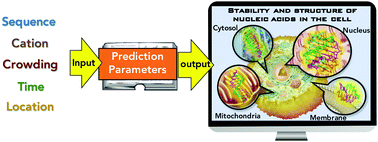Stability prediction of canonical and non-canonical structures of nucleic acids in various molecular environments and cells
Abstract
Nucleic acids (DNA and RNA) dynamically fold and unfold to exert their functions in cells. These folding and unfolding behaviours are also the basis for various technical applications. To understand the biological mechanism of nucleic acid function, and design active materials using nucleic acids, biophysical approaches based on thermodynamics are very useful. Methods for predicting the stability of canonical duplexes of nucleic acids have been extensively investigated for more than half a century and are now widely used. However, such predictions are not always accurate under various solution conditions, particularly cellular conditions, as the concentrations of cations and cosolutes under intracellular conditions, named as molecular crowding, differ from those under standard experimental conditions. Moreover, the crowding condition in cells is spatiotemporally variable. Furthermore, non-canonical structures such as triplex and tetraplex exist in cells and play important roles in gene expression. Therefore, a prediction method reflecting the cellular conditions must be established to determine the stability of various nuclei acid structures. This article reviews the biophysicochemical background of predicting nucleic acid stability and recent advances in the prediction of this stability under cellular conditions.

- This article is part of the themed collection: Nucleic Acids


 Please wait while we load your content...
Please wait while we load your content...